Innovation has long been second nature to NEC Australia. So when Gordon Gay, the general manager of the company’s Research & Development Group, speaks of his excitement at what the future holds, it is well worth a listen. He shares how NEC Australia is using Microsoft Azure IoT Hub to easily and securely connect IoT assets, helping them envisage those solutions and to facilitate the delivery of its ideas to the business world.
NEC Australia is a part of the global NEC Corporation and has been operating locally since 1969. The company has an enviable record of technological successes, foremost of which was the development of the physical layer chipset and software for the world’s first commercial mobile phone in its Melbourne offices.
And, fittingly, it is the phone that comes to mind when Mr Gay looks for an analogy from the past to illuminate a future enabled by the Internet of Things (IoT).
“The group that’s in Australia, we developed the first commercial mobile phone. So I always think back to that time, because people used to ask us: ‘What’s someone going to do with a 300 kilobit mobile phone?’ This was a question we were being asked in the early 2000s,” he said.
“But clearly, if you’d said to someone now: ‘Your mobile phone only goes to 300 kilobits’, they’ll laugh and they’ll say: ‘No, I need something at about 50 or 100 megabits!’
“…People start imagining the solutions and that’s when the opportunity can present itself and things tend to explode.”
“The point I’m making is that sometimes the technology comes and it’s not clear what it can be used for, because people don’t have that reference point. Once you have it there, then people start imagining the solutions and that’s when the opportunity can present itself and things tend to explode.”
NEC’s mission of “Providing infrastructure for an abundant society for all people via ICT”, necessitates the need for IoT solutions. NEC’s aim is to leverage its technical capability to provide these solutions. A software platform that is cost effective and scalable is critical and this is the reason NEC Australia, a year ago settled on Azure IoT technology after surveying available IoT platforms, explains Mr Gay.
The Azure IoT Hub is an engine that has been built from the ground up to take advantage of the enormous scale offered by the cloud.
The Azure IoT Hub is an engine that has been built from the ground up to take advantage of the enormous scale offered by the cloud. It was engineered to absorb tens of millions of small pieces of data and then to analyse and create an action out of that data.
“We engaged early with Microsoft IoT technology and we believe in the scope and scale of what it can do,” he said. “And what it really does is take any sensor – be it a mobile phone, be it a heart rate monitor, it could be anything – and connect that through Azure IoT services in a way that basically us to connect millions of devices to a central location and on which we can run our algorithms.”
“What I see is there’ll be an explosion of solutions around connected devices,” he said. “And as there are more and more of these devices being made and advances being made on the sensors, you’ll see more and more of these types of solutions come to market.
“And I think the understanding of what IoT can deliver is not fully understood by the market yet. People don’t see the full breadth yet of what business models you can attach to it, because at the end of the day it’ll be business that drives it.”
He gave as an example of a request the company received from a government department for something to connect their databases so that when employees were out in the field they could be given information about any safety issue in real-time that might have arisen surrounding the client.
When NEC drilled down on the reasons behind the request it was discovered that the prime consideration was for the safety of employees.
“So we then thought, if safety is a problem, why don’t we solve the safety problem?”
The company has identified five focus areas – finance, health, transport and agriculture – on which it intends to concentrate and where Azure IoT Hub can facilitate the customisation of NEC software around a customer’s existing system.
“Azure IoT is a very flexible platform that can easily be applied to any industry, but especially the five that we have identified. It’s all about identifying which industries can we consolidate a large amount of data points into a central location to process data.”
Lee Hickin, Microsoft Australia’s IoT lead, said NEC was one of the organisations getting early mover advantage with IoT.
“Organisations like NEC that are making investments and leveraging new technology are reaping the benefits, once you step into these technologies, it exposes you to the exponential benefits of other customer scenarios and other customers that could use it,” he said. “You develop an idea. You quickly turn it into a pilot. You find that there’s actually a product gap and a need. You create a product and suddenly you’ve got a new offering and a commercial capability to sell it, so it’s a perfect story for those that are willing to take that chance.”
It’s an assessment that Mr Gay agrees with.
“But once that technology becomes widespread, people can’t imagine what they ever did without it.”
“When technology is new, people can’t imagine what you can do with it, and that’s the job that falls to people like us at NEC – we need to help them with the imagination about how to develop these new solutions. Because while it sounds very simple, it’s very hard if you don’t have the background of being able to create complex solutions in such a short time.
“But once that technology becomes widespread, people can’t imagine what they ever did without it.”







